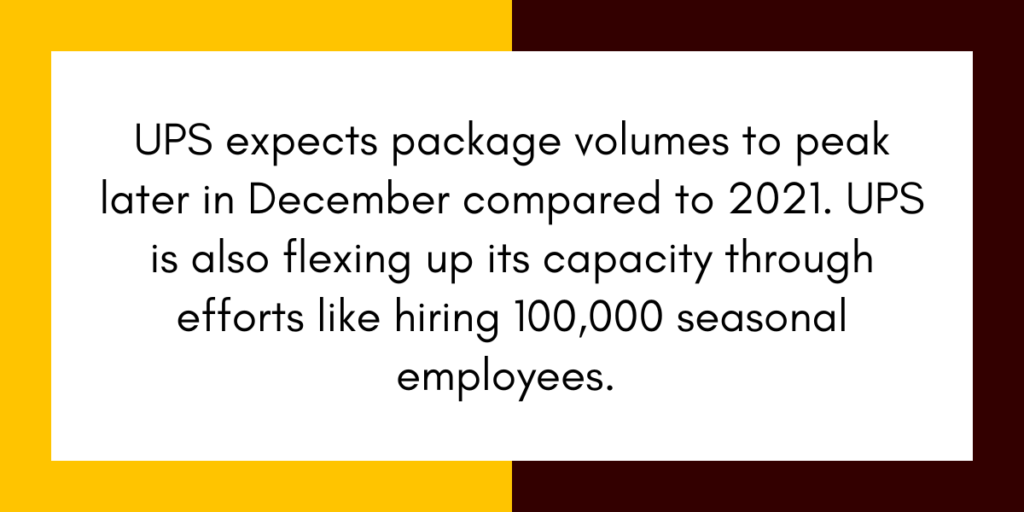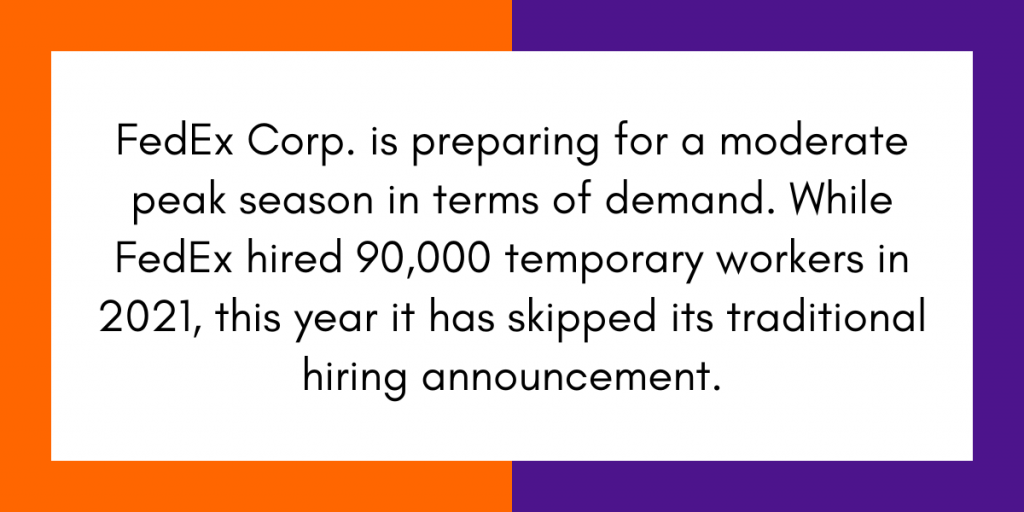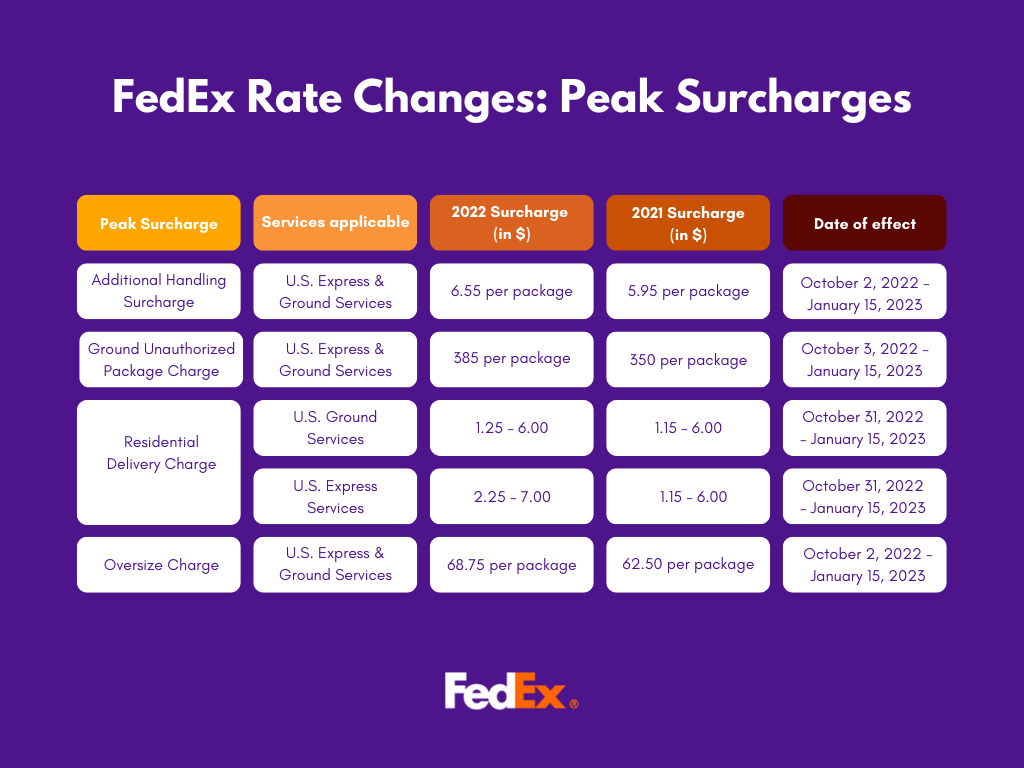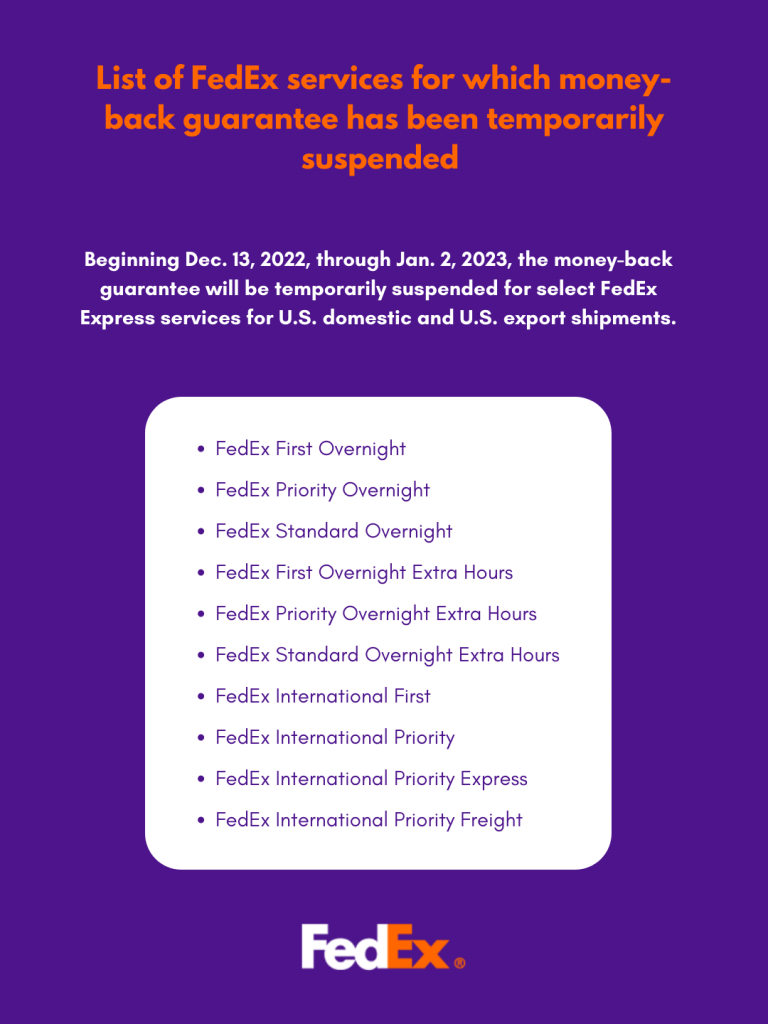No more talking about this year’s holiday season in the future sense. It’s already up and running. Your fellow e-commerce businesses, shipping carriers, third-party logistic partners, etc have all geared up to handle the peak season’s shipping volume without succumbing to delivery issues and negative customer experiences.
But just because the times are busy doesn’t mean we run helter-skelter till the peak returns season in January. You can still work on your strategies to make improvements for last-minute shoppers.
We have compiled as much as peak season trends and metrics to help you make data-backed decisions to optimize your post-purchase during the critical Holiday season and beyond.
Here’s a sneak peek of what you’ll be seeing in this article.
- Peak season trends by the numbers
- Forecast of peak season carrier performance rates
- Frequent issues that e-commerce businesses might face during the peak season
- Strategies to ensure post-purchase success
Without further ado, let’s get into things.
Peak Season Trends by the Numbers
We’ll start with the most important trend that is pretty much going to be a first for the peak delivery season in a while. Experts are predicting a lower shipping volume compared to the last two years, thanks to the pandemic-induced e-commerce boom slowing down and customers navigating high inflation.
Despite inflation and other concerns, e-commerce is projected to grow, at a slower rate of 6-8% YoY compared to 18% in the year before.
Also, it is expected that peak sales will happen only later in the holiday season this year with shoppers hoping to take advantage of discounts. Major brands too have anticipated such trends and are pushing early sales with lucrative deals. Amazon launched a second Prime Day, and stores like Target and Walmart followed suit with early fall holiday deals.
Also, major retailers are expected to take extraordinary measures to tackle stockpiling by maximizing discounts in the month of December which will result in Holiday sales peaking a little bit later.

Happy sales numbers aside, there seems to be some doom and gloom, i.e new challenges for e-commerce shippers in the form of the supply chain, inventory, and fulfillment issues.
Despite the possibility of a lower shipping volume, record high shipping costs, shipping network congestion, and labor shortage will affect the 2022 Holiday Season. This can in turn hurt the operational efficiency of shipping carriers.
But shipping carriers would’ve taken proactive measures to stay ahead of these challenges or have they?
Forecast of Peak Season Carrier Performance Rates
Major carriers like UPS and FedEx are aware of the incoming peak season shipping volume and have taken appropriate measures to counter them.


All major carriers in the US, like FedEx, UPS, and the U.S. Postal Service (USPS) are equipped to handle about 110 million packages per day, and that could outpace peak season handling capacity by about 18 million packages per day. However, despite all of this, the on-time delivery performance is projected to significantly stay impacted.
In the 5th edition of our annual “2022 State of Holiday Shipping in the U.S.” report, we have forecasted that UPS is expected to outperform FedEx across all shipping types, going by on-time performance indicators from the past 12-24 months.
Also, when it comes to shipping services, packages shipped through both Ground and Express services offered by UPS and FedEx will remain affected.
That’s not all! The report focuses on understanding the impact of the surge in order volumes and supply chain disruptions on the on-time delivery performance of UPS & FedEx in the United States during the peak season, with actionable strategies to optimize post-purchase operations.
Undoubtedly, shipping carriers like UPS and FedEx will be stretched to the limits in order to meet on-time delivery promises this Holiday season, this will result in an unprecedented spike in delivery disruptions. Additionally, peak season surcharges will escalate shipping costs to fulfill Holiday orders.
Not just delays, there are further issues that can take a toll on the post-purchase experiences you provide. Let’s take a look at what they are and how they can affect your business.
Frequent Issues That E-commerce Businesses Might Face During the Peak Season
1. Shipping deadlines can be stressful if you’re not aware of them
UPS and FedEx have been following this necessary practice of setting deadlines for shipping because parcel volumes during the peak season are typically significantly higher.
If you are planning to send out a parcel at the 11th hour via expedited service to satisfy last-minute shoppers, you have no choice but to be aware of the deadlines in their carriers’ holiday schedules, or else, you may end up as a victim of peak surcharges and deplete your shipping budget.
Also, you can communicate holiday shipping deadlines with your customers to ensure that your customers are not set up for frustration over their holiday gifts getting delayed but instead will have a seamless order delivery experience.
Click here to access the special holiday-specific calendars drawn up by UPS and FedEx:
2. Tracking parcels with the shipping carrier can cause anxiety
An increase in the shipping volume can only mean the odds of your shipment going haywire getting higher. Apart from delays, your parcels can get lost, damaged, etc. Even when everything seems to go well, an anxious customer who is unaware of the parcel status can bombard your support reps with WISMO inquiries.
In either of the cases, the customers are quick to blame you, the retailer, instead of the shipping carrier, who is in charge of fulfilling their parcels.
This is because customers often consider that the onus is on retailers to make sure that their parcels are delivered according to their expectations and when they face a slight inconvenience, they feel aggrieved and helpless.
To mitigate your customers’ parcel anxiety and ensure they enjoy a delightful delivery and returns experience, you can make use of a post-purchase solution that tracks your parcels in real time and keeps your customers informed about the status of their parcels at all times.
3. Shipping carriers have levied surcharges and suspended money-back guarantees


As a retailer, such costs can be a burden, especially if your shipping volume is high and your customer base is throughout the country. In such cases, if you are looking for temporary relief in the form of shipping refunds for service failures, then here’s another shocker. Shipping carriers suspend their money-back guarantee on certain dates in their holiday schedule.

UPS on the other hand, are continuing their suspension of Service Guarantee since the pandemic, except a few selected services. Click here to know what they are.
While this makes shipping more expensive and works to your disadvantage, you can take steps to make sure that you are relatively less affected by them.
The solution is really simple — take control of your post-purchase phase and reduce parcel issues from impacting your customers. This makes sure that you don’t have to compensate the customer who might stop doing business with you citing the bad experience. Also, a quality post-purchase experience from your end can increase repeat purchases. That’s two birds with one stone!
In the run-up to the holidays, the supply chain will take center stage and the winners are going to be those retailers who will take measures to mitigate the impact of delivery delays on customer experience and loyalty.
Strategies to Ensure Post-purchase CX Success This Peak Season and Beyond
Taking measures to close the post-purchase CX gap and provide customers with a frictionless delivery experience can cement you as their preferred brand to shop from. Adopting the following ways to improve your post-purchase CX will ensure a positive impact on both your customers’ lifetime value and the retention rate of your business.
This is where we come in.
LateShipment.com is the world’s only cloud-based Post-purchase Success platform built to enable retail parcel shippers of all sizes to provide memorable order delivery and returns experiences — besides reducing shipping costs by up to 20%.
Here’s how LateShipment.com can help ensure post-purchase CX success:
- Proactively identify and resolve delivery related issues
- Reduce customer anxiety with automated shipping notifications
- Offer custom-built branded tracking experiences on your online store
- Make order tracking self-service to reduce delivery related support tickets
- Leverage order tracking moments to increase sales and reduce returns
- Get customer feedback around order delivery experiences
- Optimize your returns process to make it hassle-free while maintaining profitability
BONUS: Bring better performance accountability to shipping carrier services by recovering millions of dollars in refund claims.
That’s not all!
LateShipment.com seamlessly integrates with over 600 shipping carriers and business tools that include E-commerce platforms, Order Management Systems, CRM and Marketing Automation tools to help you craft delightful post-purchase experiences, at scale. Visit www.lateshipment.com to find out more.






